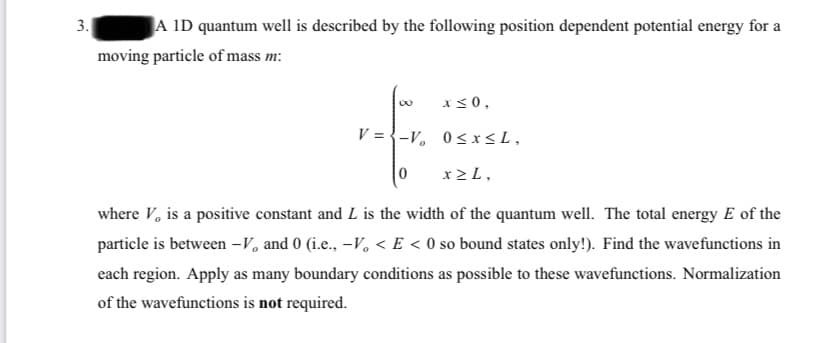3. A ID quantum well is described by the following position dependent potential energy for a moving particle of mass m: V = {-V, 0sx L, where V, is a positive constant and L is the width of the quantum well. The total energy E of the particle is between -V, and 0 (i.e., -V, < E < 0 so bound states only!). Find the wavefunctions in each region. Apply as many boundary conditions as possible to these wavefunctions. Normalization of the wavefunctions is not required.
3. A ID quantum well is described by the following position dependent potential energy for a moving particle of mass m: V = {-V, 0sx L, where V, is a positive constant and L is the width of the quantum well. The total energy E of the particle is between -V, and 0 (i.e., -V, < E < 0 so bound states only!). Find the wavefunctions in each region. Apply as many boundary conditions as possible to these wavefunctions. Normalization of the wavefunctions is not required.
Related questions
Question
100%

Transcribed Image Text:3.
A ID quantum well is described by the following position dependent potential energy for a
moving particle of mass m:
x<0,
V = {-V, 0<r<L,
x 2 L,
where V, is a positive constant and L is the width of the quantum well. The total energy E of the
particle is between –V, and 0 (i.e., -V, < E < 0 so bound states only!). Find the wavefunctions in
each region. Apply as many boundary conditions as possible to these wavefunctions. Normalization
of the wavefunctions is not required.
Expert Solution
This question has been solved!
Explore an expertly crafted, step-by-step solution for a thorough understanding of key concepts.
This is a popular solution!
Trending now
This is a popular solution!
Step by step
Solved in 6 steps with 1 images
